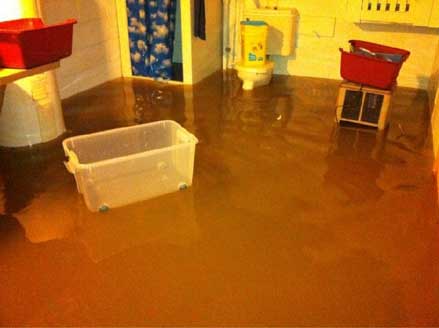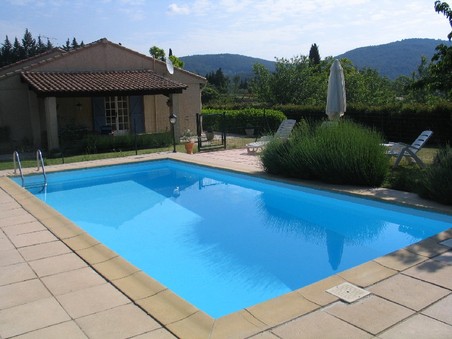Do you have a flooded basement? Even a small flood can turn into a big problem. All it takes is a little water to enter your basement before mold starts growing or structural damage occurs. A flood due to a sewer backup can also introduce a host of bacteria into your home. Follow the steps below to make sure you deal with your flooded basement properly and safely.
Step 1: Safety
If your basement is flooded you need to be aware of the following safety hazards:
· Electric shock
· Gas leaks
· Bacteria due to sewage
· Structural damage
Shut off the power to your basement, turn off the gas, check your house for any structural damage and if you suspect there is sewage in your basement call a professional.
Step 2: Find the Source of the Flood
There are several different reasons your basement could be flooded. Finding the cause of the flood may help you stop it.
· A leak in your plumbing: Minor water pipe leaks may be fixed by an experienced DIY’er, but serious leaks will need to be dealt with by a professional. Either way, shut-off the main water supply to your house if this is the problem.
· Sewage Backup: If the water in your basement is dirty and has a strong odor then it could be from a sewage backup. Do not flush any toilets or use the dishwasher or washing machine.
· Heavy Rain or Snow: A large amount of rain or snow can form pools of water outside of your home that can make their way into your basement.
Step 3: Call the Right People
For any plumbing leaks call a plumber. If you have a sewage backup call the city first so they can see whether the problem is with your system or the city’s. Check your house for any structural damage and call a building inspector if you find any. If water has come into contact with any electrical appliances you should call an electrician. Finally, call your insurance agent to make sure you are covered for this type of damage.
Step 4: Clean Up the Flood
Cleaning up is a three step process. First you have to get rid of the water, then clean and sanitize the area, and finally dry the basement. If this is too big of a job for you there are many companies that can be hired to do it for you.
Step 1: Safety
If your basement is flooded you need to be aware of the following safety hazards:
· Electric shock
· Gas leaks
· Bacteria due to sewage
· Structural damage
Shut off the power to your basement, turn off the gas, check your house for any structural damage and if you suspect there is sewage in your basement call a professional.
Step 2: Find the Source of the Flood
There are several different reasons your basement could be flooded. Finding the cause of the flood may help you stop it.
· A leak in your plumbing: Minor water pipe leaks may be fixed by an experienced DIY’er, but serious leaks will need to be dealt with by a professional. Either way, shut-off the main water supply to your house if this is the problem.
· Sewage Backup: If the water in your basement is dirty and has a strong odor then it could be from a sewage backup. Do not flush any toilets or use the dishwasher or washing machine.
· Heavy Rain or Snow: A large amount of rain or snow can form pools of water outside of your home that can make their way into your basement.
Step 3: Call the Right People
For any plumbing leaks call a plumber. If you have a sewage backup call the city first so they can see whether the problem is with your system or the city’s. Check your house for any structural damage and call a building inspector if you find any. If water has come into contact with any electrical appliances you should call an electrician. Finally, call your insurance agent to make sure you are covered for this type of damage.
Step 4: Clean Up the Flood
Cleaning up is a three step process. First you have to get rid of the water, then clean and sanitize the area, and finally dry the basement. If this is too big of a job for you there are many companies that can be hired to do it for you.


 RSS Feed
RSS Feed